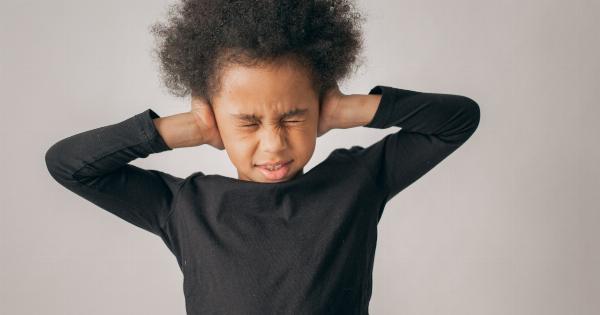As parents, we always strive to keep our children safe from harm. However, accidents can happen, and one common concern that arises is head injuries in toddlers.
While most head injuries are minor and not cause for alarm, it is essential to know when to seek medical attention. In this article, we will discuss what to do if your toddler experiences a head injury and when it is necessary to worry.
Understanding head injuries in toddlers
Head injuries can occur due to a variety of reasons, including falls, accidents, or unintentional bumps. Toddlers are particularly susceptible to head injuries as they are still developing their motor skills and coordination.
The most common types of head injuries in toddlers include:.
1. Concussions: These are mild traumatic brain injuries that result from a bump, blow, or jolt to the head. They can cause temporary disorientation, dizziness, and headache.
2. Skull fractures: A break in one of the bones of the skull can occur due to a severe impact. This type of injury may require immediate medical attention.
3. Scalp wounds: Cuts or lacerations on the scalp may bleed profusely but are often not serious. They can be treated with proper wound care.
What to do immediately after a head injury?
When your toddler experiences a head injury, it is crucial to remain calm and follow these steps:.
1. Assess the situation
Determine the severity of the injury by observing your toddler’s behavior. If the injury was due to a minor fall and your child is alert, responsive, and behaving normally, the chances are that it is not serious.
2. Apply first aid
If there is bleeding, apply gentle pressure using a clean cloth or bandage to stop it. For bumps or swelling, you can apply a cold compress wrapped in a cloth to the affected area for 15 minutes every hour to reduce inflammation.
3. Observe for signs of concussion
Keep a close eye on your toddler for the next 24-48 hours for any signs of a concussion, such as persistent headache, vomiting, changes in behavior, excessive sleepiness, difficulty walking, or loss of balance.
If any of these symptoms appear, seek medical attention immediately.
When to seek medical attention?
While most head injuries in toddlers can be managed at home, certain situations require immediate medical attention. Consult a healthcare professional if your toddler:.
1. Loses consciousness
If your toddler loses consciousness even for a few seconds after the head injury, it is crucial to seek medical help immediately. Loss of consciousness indicates a moderate to severe head injury.
2. Experiences persistent vomiting
Vomiting that continues for several hours post-injury can be a sign of a more severe head injury. It is essential to consult a doctor in such cases.
3. Displays changes in behavior
If your toddler becomes unusually irritable, lethargic, or starts having difficulty focusing or responding appropriately, it could indicate a more severe injury. Seek medical attention promptly.
4. Has a bump or depression on the head
Not all head injuries are visible externally, but if you notice a bump or depression on the head, it may be necessary to consult a healthcare professional to rule out any underlying skull fractures or internal injuries.
Preventing head injuries in toddlers
While accidents are unpredictable, there are certain measures you can take to reduce the risk of head injuries in toddlers:.
1. Childproof your home
Ensure that your home is a safe environment for your toddler by properly childproofing it. Install safety gates, secure furniture, and ensure electrical outlets are covered to prevent falls and accidents.
2. Supervise outdoor play
When your toddler is playing outside, never leave them unattended. Watch out for potential hazards, such as uneven surfaces or playground equipment that may cause falls or head injuries.
3. Provide appropriate safety gear
If your toddler is involved in activities such as cycling, skating, or any other potentially risky physical activity, make sure they wear appropriate safety gear like helmets and knee pads.
4. Educate caregivers
If your child spends time with other caregivers, such as grandparents or babysitters, make sure they are aware of safety precautions and are trained in first aid, so they know how to handle a head injury should one occur.
In conclusion, head injuries in toddlers can be a cause for concern but not always a cause for panic.
By remaining calm, administering appropriate first aid, and knowing when to seek medical attention, parents can effectively manage head injuries in toddlers. Furthermore, taking preventive measures can significantly reduce the risk of these accidents occurring in the first place.
Remember, your child’s safety is a top priority, and being well-informed empowers you to make the right decisions in case of an unfortunate incident.































